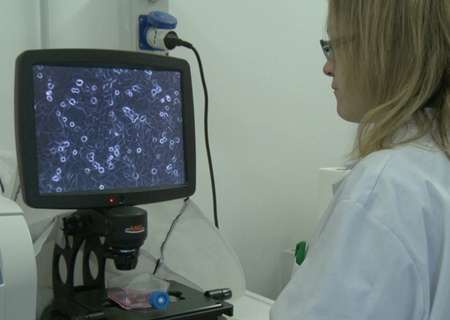Peering down protein-DNA interactions to better understand how genes work

Almost every one of our cells has an entire copy of our genome. But only differing subsets of genes are active and expressed in any given cell. Epigenetics is the study of how the activity of our genes is controlled and regulated. It is based on where and how so called regulatory proteins interact with DNA to control the activity of genes. But probing this fundamental biological process has conventionally been limited. Time-consuming chemical processes are used to link proteins to DNA and determine binding sites. This means that important fast interactions are missed.
Now, the EU-funded project, ATLAS, completed in 2012, has developed an extremely fast method to link proteins to DNA, based on laser pulses. "In a time smaller than a second you can study the binding of DNA to proteins. And in particular you can study the direct versus indirect bindings in a dynamic way," explains project coordinatorLucia Altucci, associate professor in biomedical research at the Second University of Naples, in Italy. Altucci expects that the laser method will drastically improve the understanding of the epigenetics of genes.
A fundamental example of epigenetics is cell differentiation. Specific protein-DNA binding interactions modify and control the expression of genes differently in various cells, as an organism develops. Gene expression results in the production of proteins - the 'workhorses' of cells. These include, amongst many other types, enzymes responsible for vital metabolic processes and, crucially, the regulatory proteins themselves.
These regulatory proteins perform four main actions on genes: they can read genes acting as transcription factors, enhance gene expression acting as enhancers, silence genes, or modify the way genes are interpreted acting as modulators. Regulatory proteins bind DNA at specific sites either directly—such as transcription factors—or indirectly via another protein—such as enhancers. Up to now, the detection of the binding sites of these proteins has been achieved by chemically binding these proteins to the DNA. And then, by sequencing the DNA one can determine the binding sites. A drawback of this method is that the chemical linking is a slow process, taking from minutes up to hours, making it impossible to detect processes that happen in seconds.
Instead of using chemicals to create the links between the DNA and proteins, the project researchers developed a method using laser pulses that generate pulses as short as a femtosecond—equivalent to one millionth of one billionth of a second. By directing these pulses at living cells, it becomes possible to link proteins to DNA in fractions of seconds, without killing the cells. We can follow the interaction of the DNA with the proteins in a dynamic way, explains Altucci. In indirect bindings, a protein links to DNA via one or more so-called adaptors that are also proteins, she explains."We can check for transitory bindings of proteins that last less than one minute," she tells youris.com, "I believe that we will be able to re-classify the role of some transcription factors and some enhancers."
One expert believes the laser approach looks very promising. "I wouldn't mind trying it myself," says Adele Murrell, a biochemist, reader in regenerative medicineat the University of Bath, in the UK. She sees the need for less sample material as an advantage. But the possibility to fine-tune the laser strength is important. "Perhaps you will be able to work out the binding dynamics of how strong the interaction between proteins and DNA is," Murrell tells youris.com.
Another expert is also enthusiastic about the project. "What makes the bonding by laser interesting is that the system can be automated. And the results will also be better,"says Olivier Rohr, professor of parasitology at the University of Strasbourg, France. But there is a cautionary note, Rohr says: "The only worry I have is the cost of the system."
Provided by Youris.com

















